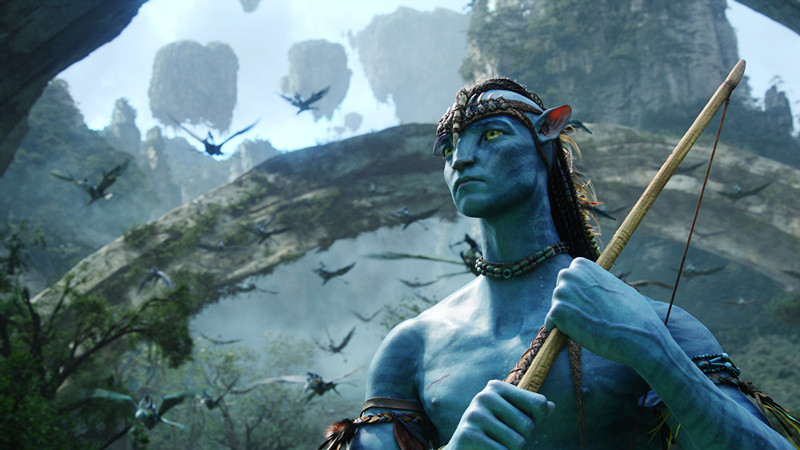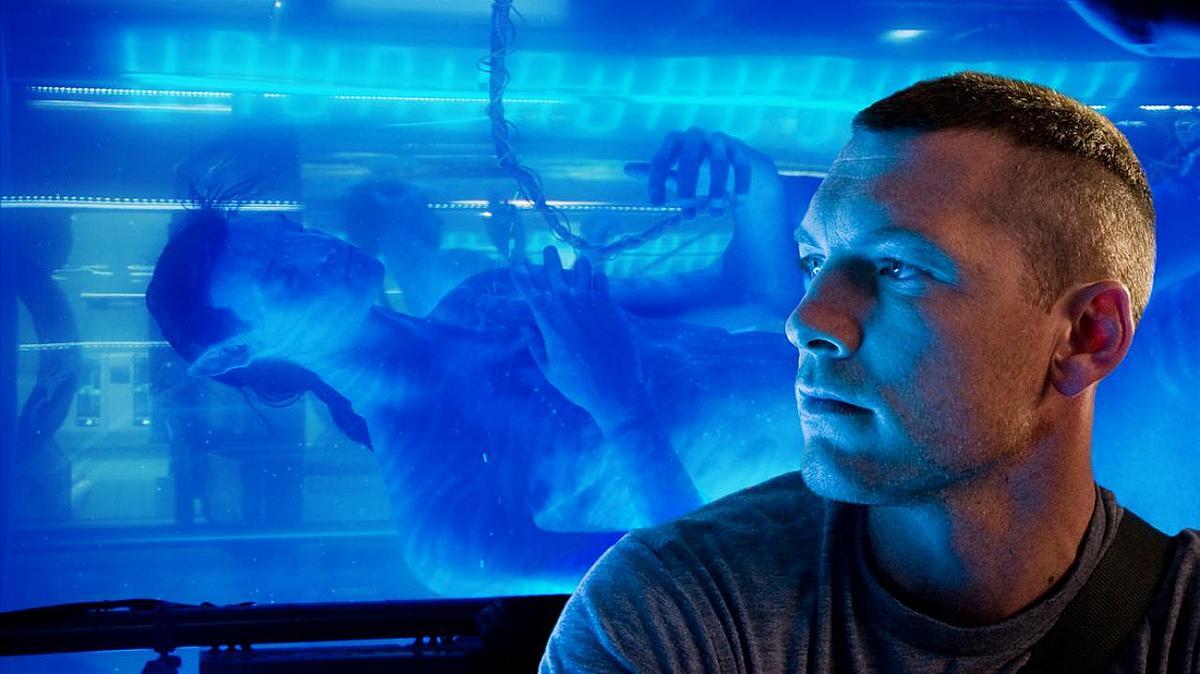
When James Cameron’s Avatar was released at the end of 2009, audiences were smitten. With its high-tech 3D and its use of cutting-edge technology, Avatar was awesome to look at. It made $77 million in its first weekend of release and eventually made an astounding $760 million domestically (and $2.7 BILLION dollars worldwide). Critics were impressed as well: Avatar has a 83% Fresh rating on Rotten Tomatoes (very good) and an aggregate score of 83 on Metacritic (even better). For reference, Alfonso Cuaron’s Children of Men has a score of 84 on Metacritic and Christopher Nolan’s The Dark Knight earned an 82.
Avatar was so well-received that it quickly became the odds-on favorite to win the Academy Award for Best Picture at the 2010 awards show. When one watches Avatar, it is immediately evident the amount of craft and vision that went into producing it. This is no surprise, coming from the man who helmed Terminator 2: Judgment Day, The Abyss, Aliens, and Titanic (itself a Best Picture winner). James Cameron knows how to make gorgeous and nail-biting films that the public loves. To take anything away from him would be silly–a waste of time.
That being said, Avatar’s mind-boggling success had less to do with that masterful filmmaking and more to do with its blockbuster characteristics. At the 2010 Academy Awards, Kathryn Bigelow’s The Hurt Locker took home the Best Picture prize (as well as Best Director for Bigelow) while Avatar took home statues for Best Cinematography, Best Visual Effects, and Best Art Direction (acknowledging the beauty and craft of the movie but not so much its resonance).
For most of 2010, Avatar was spoken of as one of the possible best films ever made. However, as the AMPAS recognized, Avatar is less an incredible picture and more a well-made, slick, exciting event. Since then, Avatar’s reputation has continued to decline. Even though it is a solid, engrossing movie, here are 8 reasons Avatar’s reputation has started to deteriorate.
1. It treats its story with exaggerated somberness, even though the story is lifted from several previous sources
![]()
As has been written about previously (hundreds of times), the story of Avatar is recycled from multiple sources, such as the real-life story of Pocahontas and the movies Ferngully and Dances with Wolves. (One scene, which you can find showcased in a “side-by-side” version on the internet, seems lifted straight out of Ferngully, almost shot for shot.)
Though borrowing from previous stories is nothing new, treating your story as if it is beautiful and poetic and original while stealing is a little tacky. Cameron and his team seem to believe–in their bones–that no one has told such a story so important as this before and it hurts the film’s efficacy.
Though many of the opening scenes have a lightness about them, featuring throwaway but charming jokes (Sully accidentally steps on the tail of one of the Na’vi, Sully thinks he scared a big creature away when it was actually the even scarier creature behind him, etc.), you can feel the script working overtime to get the audience to like it. Once Sully begins to question his loyalty and allegiance to his fellow humans, the tone turns mostly sober, even as the plot machinations turn more obvious.
And when the final battle commences, and the slow motion begins to be employed, audiences know who is going to come out on top. There is an excitement to the images and an undeniable energy to the scenes of warfare but the story has been told before and with more nuance. The absence of nuance here is heightened by the self-seriousness, which may have been shared by its forerunner, Dances with Wolves, but felt more earned in that case.
2. The dialogue is undeniably clunky
![]()
For all of Cameron’s technical wizardry, his writing leaves something to be desired. Like Titanic before it, Avatar’s strength lies in areas outside of its script. One of its most ineffective aspects is its dialogue, which is too often expository or just plain awkward. Because the film streamlines its exposition effectively, it, by necessity, puts big chunks of information that are important to the audience’s understanding in the explanatory opening scenes.
Along with that inelegant table-setting, there are also just clunky statements and phrases that seem much more like they came from the mind a screenwriter than the mouth of a real person. Often those lines are cliche (“I want you to learn these savages from the inside”), overly sarcastic (“He’s dead. I know it’s a big inconvenience for everyone”), ineffective shortcuts to revealing character (“I need a researcher, not some jarhead dropout”), or simply lazy (having a soldier refer to the in-a-wheelchair Jake Sully as “meals on wheels”).
While movies whose main aim is to entertain don’t always dazzle with their dialogue, it prevents Avatar from transcending its visual-effects-driven, blockbuster roots. To listen to the characters’ speech in Avatar is to know what it feels like to fumble for the right-sounding words and not be able to find them. Again, it doesn’t stop Avatar from succeeding; it simply stops it from amazing.
3. The special effects, while often wonderful, are not always as impressive as they should be
![]()
There is no denying that there are some great images throughout the film. However, for a movie that was lauded for its eye-popping effects (and many of them are fantastic), there are also some less-than-stellar images, even for 2009. When the audience first sees Pandora, there is a gorgeous shot of the beautiful trees and the surrounding natural habitat. It is breathtaking; however, the trees definitely have a fakeness to them. It doesn’t prevent the scope of the scene from registering in the viewer, but it also damages the feeling of perfection by calling attention to its lack of perfection.
Often, Cameron and the effects teams seem content with designing the most amazing-looking video game ever made. Every soldier wearing a face mask looks more like a video game Avatar than a real person with a mask. Many of the creatures, such as the lemurs, look entirely like CGI and not like something anyone would see in the real world. They are still cool and sharp, just not real-world sharp.
The biggest issue is that the film wants the audience to interpret the Na’vi like real people but it’s very difficult when they often look like cartoons. They move with the slight herky-jerkiness of motion-captured characters and even though their facial expressions are better than probably any film that came before, they still leave something to be desired.
Even with genuine awe-inducing moments, like the first time Sully really starts to interact with nature in Pandora and watches the small, flying jellyfish-like bugs, there are enough scenes that keep the audience at a distance that the choice to use motion capture now seems suspect.
4. None of the performances rise much above average

For a movie that set records at the box office and was the frontrunner for Best Picture for a few months, there is not one great performance that stands out. This is not to bad-mouth any of the performers, who all put their heart into their characters. Sam Worthington does a fine job of playing the cocky soldier who must realistically become humble.
Zoe Saldana is a talented actress–always good–and this is no exception. As Neytiri, she is the audience’s entry point into the minds of the native Na’vi. She has the burden of helping the audience overcome the distance they feel from the synthetic-looking Na’vi. And, for the most part, she is able to do it. But none of the performances can quite eclipse the blockbuster that they are present within. Everything is meant to serve the effects and the action sequences instead of the characters.
The fact that most of the scenes set in Pandora relied on motion capture technology is very cool and a tribute to the talent and hard work of the actors. (There is some great footage online of the various actors performing the motion capture aspect of their performances.) But the video game-like quality of the production design grounds the performances when they should soar.